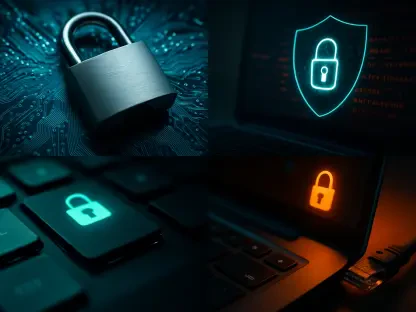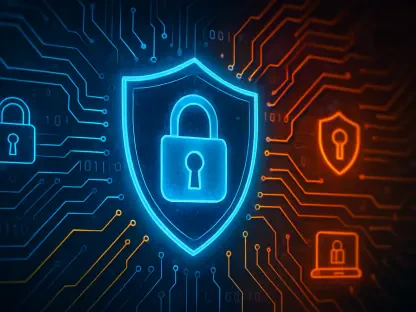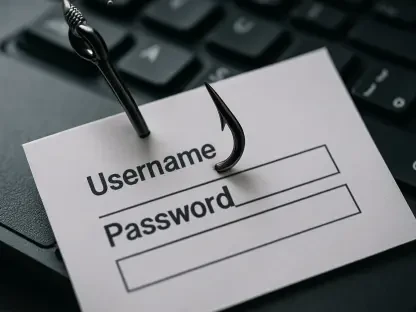Initially designed for workplace oversight, employee monitoring software has become an attractive tool for cybercriminals. Its original purpose has been subverted, as ransomware groups like Qilin and Hunters International exploit popular platforms such as Kickidler to execute sophisticated espionage activities. This marks a troubling evolution in ransomware tactics, where legitimate technologies are repurposed to infiltrate deeply into corporate networks, inevitably transforming systems meant for productive oversight into conduits for unauthorized access and information theft.
Exploitation of Legitimate Software
The Emergence of a New Threat
The advent of ransomware groups using legitimate employee monitoring software has added a novel dimension to cybersecurity challenges. Kickidler, a tool utilized by over 5,000 organizations, is emblematic of this shift, being transformed from its intended surveillance role into a stealthy mechanism of espionage. This evolution signifies how threat actors manage to customize tools for strategic gains, converting workplace resources into potent avenues for malicious infiltration. Recognizing this shift involves understanding the broader implications of seemingly innocuous software being co-opted for harmful activities, which heightens the urgency of reassessing security measures surrounding legitimate software.
A Foothold Through Trojanized Tools
Ransomware groups have devised cunning methods for penetrating corporate environments, with trojanized IT admin tools being a notable example. These tools are propagated via SEO poisoning campaigns, leading to highly deceptive websites that can appear remarkably legitimate. An instance includes a falsified RVTools download portal, tricking IT administrators into installing compromised software that ushers in access privileges typically reserved for high-level users. These cybercriminals exploit the trust integral to standard administrative procedures, thereby gaining a vital foothold within targeted networks. The precision of these attacks underscores the effectiveness of their entry tactics and the pressing need for improved vigilance among corporate IT departments.
Systematic Reconnaissance and Infiltration
Strategic Misuse of Kickidler
Kickidler has emerged as a powerful asset for cybercriminals due to its ability to capture sensitive credentials discreetly. Threat actors exploit this capability to navigate around defense mechanisms like decoupled backup authentication. By logging keystrokes and capturing web page screenshots from administrators’ workstations, attackers can acquire the necessary passwords to access off-site cloud backups. This subtle yet effective strategy enables attackers to avoid more detectable intrusion techniques, such as memory dumping, enhancing their chances of success in encrypting critical infrastructure. The strategic misuse of Kickidler reveals the adeptness of cybercriminals in repurposing tools for espionage, necessitating enhanced cybersecurity protocols to counteract such exploitation.
Detailed Methodologies in Use
Once infiltration is achieved, ransomware operators employ meticulously calculated tactics to ensure extended reconnaissance. Within this phase, Kickidler is often deployed under guises like ‘grabber.exe,’ running seamlessly to surveil and gather crucial intelligence over prolonged periods. The data collected from such monitoring is systematically organized and transferred to attacker-controlled AWS EC2 servers, orchestrating further network infiltration moves. Through patient and precise reconnaissance, these threat actors acquire the information needed to streamline their operations across the affected network. Such sophisticated methodologies highlight the extent of planning involved, as malware remains dormant for days or even weeks, stressing the importance for organizations to identify these clandestine activities promptly.
Lateral Movement and Data Exfiltration
Advanced Techniques for Network Breach
To ensure extensive network penetration, attackers leverage conventional IT tools such as Remote Desktop Protocol (RDP) and PsExec. These enable lateral movement across the compromised network. Techniques such as establishing reverse RDP tunnels using SSH clients like KiTTY are employed to elude detection by masking malicious activities over secure ports. This strategic deployment demonstrates the attackers’ ability to navigate network defenses effectively, posing significant challenges to the safeguarding of corporate infrastructure. Such advanced techniques require vigilant monitoring and swift adaptive responses from cybersecurity teams to thwart unauthorized movement and penetration efforts effectively within enterprise environments.
Ransomware Deployment to Disrupt Operations
VMware ESXi environments often represent prime targets for ransomware deployment. Attackers utilize scripts to automate the shutdown and encryption of virtual machines, simultaneously obliterating typical recovery pathways through means like zeroing out disk space. This comprehensive attack methodology results in substantial data loss coupled with severe operational disruptions. By failing to leave ransom notes, the attackers maintain a veil of uncertainty, further complicating recovery efforts. The deliberate targeting of ESXi systems highlights the sophisticated nature of these cyber threats, urging organizations to prioritize enhanced protective measures against the deployment and destructive consequences of ransomware within vital virtual environments.
Security Implications and Concerns
Workplace Surveillance Risks
The misuse of monitoring tools such as Kickidler illuminates wider vulnerabilities inherent in workplace surveillance technologies. As cyber threats evolve, the potential for these tools to become inadvertent gateways for intrusion magnifies, especially when data management practices are lax. The threat posed by inadequately secured surveillance systems accentuates the need for robust safeguards to protect sensitive information they’re designed to monitor. Moreover, the instances of exploitation emphasize the necessity for companies to constantly evaluate and fortify their existing surveillance protocols, ensuring that they meet the stringent demands required to prevent unauthorized access and data breaches.
Mitigation Strategies for Organizations
Originally created for overseeing employee activities in workplaces, monitoring software is now increasingly being misused by cybercriminals. Its intended purpose has undergone a significant transformation as groups like Qilin and Hunters International hijack well-known platforms such as Kickidler to conduct advanced espionage operations. This alarming shift in ransomware strategies illustrates how legitimate technologies are being adapted and exploited to penetrate corporate networks extensively. As a result, systems once intended for productive oversight have been turned into channels for unauthorized access and data theft. The misuse of these technologies underscores the evolving nature of cyber threats, where tools meant to enhance productivity and security are weaponized, posing significant risks to corporate assets and sensitive information. Businesses must adapt to this threat by strengthening their cybersecurity measures, ensuring that tools designed for employee management don’t become vulnerabilities exploited by malicious actors.









